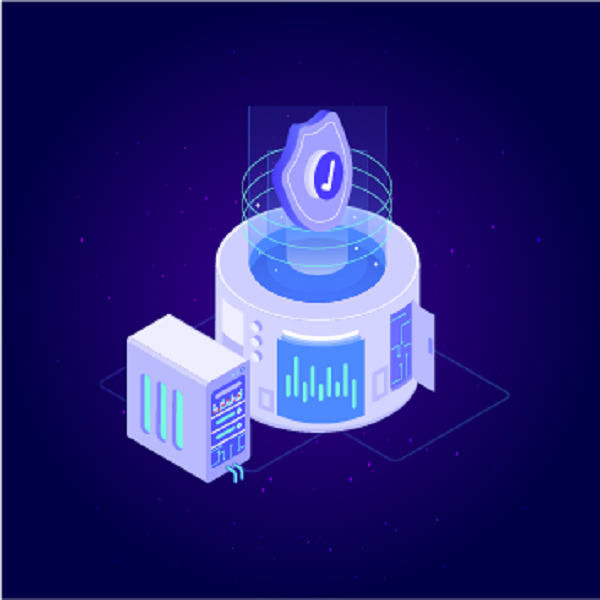Residential Proxies
Allowlisted 200M+ IPs from real ISP. Managed/obtained proxies via dashboard.

Proxies Services
Residential Proxies
Allowlisted 200M+ IPs from real ISP. Managed/obtained proxies via dashboard.
Residential (Socks5) Proxies
Over 200 million real IPs in 190+ locations,
Unlimited Residential Proxies
Unlimited use of IP and Traffic, AI Intelligent Rotating Residential Proxies
Static Residential proxies
Long-lasting dedicated proxy, non-rotating residential proxy
Dedicated Datacenter Proxies
Use stable, fast, and furious 700K+ datacenter IPs worldwide.
Mobile Proxies
Dive into a 10M+ ethically-sourced mobile lP pool with 160+ locations and 700+ ASNs.
Scrapers
Collection of public structured data from all websites
Proxies
Residential Proxies
Allowlisted 200M+ IPs from real ISP. Managed/obtained proxies via dashboard.
Starts from
$0.6/ GB
Residential (Socks5) Proxies
Over 200 million real IPs in 190+ locations,
Starts from
$0.03/ IP
Unlimited Residential Proxies
Unlimited use of IP and Traffic, AI Intelligent Rotating Residential Proxies
Starts from
$1816/ MONTH
Rotating ISP Proxies
ABCProxy's Rotating ISP Proxies guarantee long session time.
Starts from
$0.4/ GB
Static Residential proxies
Long-lasting dedicated proxy, non-rotating residential proxy
Starts from
$4.5/MONTH
Dedicated Datacenter Proxies
Use stable, fast, and furious 700K+ datacenter IPs worldwide.
Starts from
$4.5/MONTH
Mobile Proxies
Allowlisted 200M+ IPs from real ISP. Managed/obtained proxies via dashboard.
Starts from
$1.2/ GB
Scrapers
Web Unblocker
Simulate real user behavior to over-come anti-bot detection
Starts from
$1.2/GB
Serp API
Get real-time search engine data With SERP API
Starts from
$0.3/1K results
Video Downloader
Fully automated download of video and audio data.
Starts from
$0.07/GB
Scraping Browser
Scale scraping browsers with built-inunblocking and hosting
Starts from
$2.5/GB
Documentation
All features, parameters, and integration details, backed by code samples in every coding language.
TOOLS
Resources
Addons
ABCProxy Extension for Chrome
Free Chrome proxy manager extension that works with any proxy provider.
ABCProxy Extension for Firefox
Free Firefox proxy manager extension that works with any proxy provider.
Proxy Manager
Manage all proxies using APM interface
Proxy Checker
Free online proxy checker analyzing health, type, and country.
Proxies
AI Developmen
Acquire large-scale multimodal web data for machine learning
Sales & E-commerce
Collect pricing data on every product acrossthe web to get and maintain a competitive advantage
Threat Intelligence
Get real-time data and access multiple geo-locations around the world.
Copyright Infringement Monitoring
Find and gather all the evidence to stop copyright infringements.
Social Media for Marketing
Dominate your industry space on social media with smarter campaigns, anticipate the next big trends
Travel Fare Aggregation
Get real-time data and access multiple geo-locations around the world.
By Use Case
English
繁體中文
Русский
Indonesia
Português
Español
بالعربية


This article deeply analyzes the operating principles and crawling technology paths of dynamic web page content, provides a full-process solution from basic technology selection to complex anti-crawling confrontation, and explores the key role of proxy IP resources in data collection.
1. Technical characteristics and crawling challenges of dynamic content
Dynamic content refers to page data that is asynchronously loaded via JavaScript or pushed in real time via WebSocket. Its core features include:
Asynchronous loading mechanism: The initial HTML of the page only contains the framework, and the actual data is loaded secondary through AJAX requests
Interaction dependency: Some data is generated only when specific user behaviors (such as scrolling and clicking) are triggered.
Encrypted communication: API interface parameters contain timestamps or encrypted tokens, which require reverse engineering analysis
Traditional crawler tools can only obtain static HTML and have a natural blind spot for dynamically generated content. This technical feature causes about 68% of modern websites to be unable to be completely crawled by basic crawler tools, and a targeted collection solution needs to be designed.
abcproxy's proxy IP service provides stable network infrastructure support for dynamic content crawling, ensuring that the collection tasks run continuously and stably.
2. Core technical path of dynamic content capture
1. Browser environment simulation technology
Headless browsers (such as Puppeteer and Playwright) completely load page resources and execute JavaScript code to generate the final DOM tree. Key technical parameters include:
Page loading waiting strategy (network idle detection/DOM element monitoring)
Automation of interactive actions (mouse movement, form filling, pop-up window processing)
Memory optimization configuration (disable image loading/limit GPU usage)
2. API request reverse engineering
Capture network requests through browser developer tools and analyze data interface rules:
Analyze the URL construction rules of XHR/Fetch requests
Decryption of encryption parameter generation algorithms (such as Base64 encoding, hash check)
Simulate request header features (including device fingerprint and protocol version)
3. Dynamic DOM parsing strategy
The positioning method based on XPath or CSS selectors is prone to failure in dynamic scenarios. Improvement solutions include:
Use MutationObserver to monitor DOM node changes
Establish element fingerprint library (class name + hierarchy + attribute combination)
Set up a retry mechanism to deal with element loading delays
3. Technical solutions to combat anti-climbing mechanisms
1. Dynamic IP address management
High-frequency requests can easily trigger IP blocking, so a proxy IP resource pool needs to be built:
Residential proxy simulates real user network environment (such as abcproxy's residential proxy service)
Intelligent switching strategy is dynamically adjusted according to the response status of the target website
Concurrent connection control matches proxy IP supply
2. Browser fingerprint obfuscation
Modern anti-crawl systems use more than 300 feature recognition automation tools such as Canvas rendering and WebGL support. Countermeasures include:
Modify Userproxy to match the actual browser version
Rewrite Navigator API return value (such as plugins list)
Randomize hardware parameters (number of CPU cores, memory size)
3. Request feature randomization
Standardized traffic patterns are easy to identify and require the introduction of random variables:
The request interval follows a normal distribution (mean ±30% fluctuation)
Mouse movement trajectory simulates human behavior model
Page dwell time setting segmentation threshold
4. Performance Optimization of Data Acquisition System
1. Resource Scheduling Architecture Design
A distributed crawler cluster requires coordination of multiple components:
The task scheduler allocates collection tasks based on the target website's QPS limit
Proxy IP middleware detects availability in real time and marks failed nodes
The data cleaning pipeline processes the raw crawl results in parallel
2. Intelligent retry and fault tolerance mechanism
Establish a hierarchical exception handling strategy:
Transient errors (such as network fluctuations) are retried immediately
Persistent errors (IP blocking) trigger backup plans
Missing key data initiates the compensation collection process
3. Cache strategy optimization
Reduce duplicate requests and improve efficiency:
Create hash indexes for paging parameters and filter conditions
Set dynamic cache expiration time (based on website update frequency)
Use Bloom filters to remove duplicate URLs
The evolution of dynamic content crawling technology has always maintained a game relationship with the anti-crawling mechanism. A stable and reliable network infrastructure is the prerequisite for ensuring collection efficiency. As a professional proxy IP service provider, abcproxy provides a variety of high-quality proxy IP products, including residential proxies, data center proxies, static ISP proxies, Socks5 proxies, and unlimited residential proxies, which are suitable for web page collection, e-commerce, market research, social media marketing, website testing, public opinion monitoring, advertising verification, brand protection, and tourism information aggregation. If you are looking for a reliable proxy IP service, please visit the abcproxy official website for more details.
Featured Posts
Popular Products
Residential Proxies
Allowlisted 200M+ IPs from real ISP. Managed/obtained proxies via dashboard.
Residential (Socks5) Proxies
Over 200 million real IPs in 190+ locations,
Unlimited Residential Proxies
Use stable, fast, and furious 700K+ datacenter IPs worldwide.
Rotating ISP Proxies
ABCProxy's Rotating ISP Proxies guarantee long session time.
Residential (Socks5) Proxies
Long-lasting dedicated proxy, non-rotating residential proxy
Dedicated Datacenter Proxies
Use stable, fast, and furious 700K+ datacenter IPs worldwide.
Web Unblocker
View content as a real user with the help of ABC proxy's dynamic fingerprinting technology.
Related articles

CURL -X option: 10 scenario analysis and proxy IP integration tips
This article uses 10 real code examples to explain the application skills of the -X parameter in the curl command, and combines proxy IP technology to demonstrate how to break through access restrictions, improve API testing efficiency, and safely debug complex requests.

Ruby Web Scraping
This article deeply analyzes the technical advantages and practical methods of Ruby in web scraping, and discusses how to improve data collection efficiency in combination with proxy IP. It is suitable for developers and data scientists.

What is Web Scraping Python BeautifulSoup
This article deeply analyzes the core principles of web crawlers and the implementation of Python BeautifulSoup technology, covering the complete path from basic analysis to practical development, helping you to efficiently obtain and process web page data.